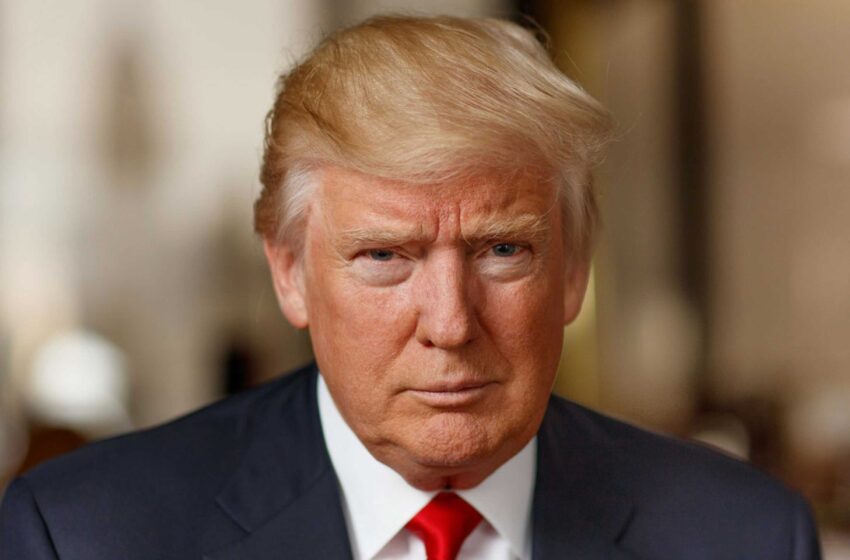Trump wants Fannie Mae to push homebuilders: Here’s what it means for housing costs

Donald Trump. Picture: David Hume Kennerly/Getty Images
President Donald Trump has reignited debate over America’s housing shortage by accusing “Big Homebuilders” of sitting on “2 million empty lots” instead of building homes. Speaking on his social platform Truth Social, Trump compared the industry to OPEC, suggesting developers were artificially holding back supply and driving up costs.
“They’re my friends, and they’re very important to the SUCCESS of our Country, but now they have to start building Homes,” Trump wrote. He called on Fannie Mae and Freddie Mac, the government-backed mortgage giants that guarantee more than half of U.S. home loans, to “get Big Homebuilders going.”
Why Fannie Mae and Freddie Mac Are in the Spotlight
Fannie Mae and Freddie Mac have been under federal conservatorship since the 2008 financial crisis, but Trump has repeatedly floated plans to privatize them. According to Reuters, Trump met with U.S. bank executives in August to discuss their role in expanding mortgage access.
If given more leverage, the two firms could speed up financing for developers, but experts question whether that alone would solve the bottleneck. As economist Bryan Caplan told Fortune, “The real obstacle is regulation and zoning, not financing. If you see an empty lot, the builder is probably waiting on permission.”
Is Trump’s “OPEC” Analogy Fair?
Trump’s comparison of homebuilders to OPEC has divided analysts. Critics argue that unlike oil producers, U.S. builders face regulatory hurdles, soaring costs, and shifting buyer demand. A National Association of Home Builders (NAHB) survey found that 64% of builders reported lot shortages in September 2025, and 39% cut prices to entice buyers.
Still, Trump’s framing taps into a populist narrative that developers are hoarding land while millions struggle with record-high housing costs. According to Redfin data cited by Newsweek, the median home price in August was $439,278, up 1.5% from last year, even as sales declined 2.3%.
READ ALSO
Why millions of Pensioners could see their DWP winter fuel payments taken back: What to know
What This Means for the American Dream
By urging Fannie Mae and Freddie Mac to push builders, Trump is positioning himself as taking action on the housing affordability crisis. He has repeatedly tied the issue to restoring the “American Dream,” warning that high prices and low inventory are locking millions out of homeownership.
However, as Fortune notes, without tackling zoning laws, land-use restrictions, and supply-chain constraints, Trump’s call may have more symbolic than practical impact. While financing reforms could boost building in states with looser rules like Texas, experts say coastal markets with strict zoning may remain gridlocked.
Could Lower Rates Help Without Trump’s Intervention?
Some relief may come from falling mortgage rates. Freddie Mac data shows the average 30-year fixed mortgage dropped to 6.34% in early October, easing slightly from 2024 highs. NAHB economists argue that cheaper borrowing costs could naturally encourage more construction, even without political intervention.
Still, with the housing supply gap estimated at 3.8 million homes nationwide, Trump’s pressure on homebuilders, and his push to reform Fannie and Freddie, will remain a political flashpoint as the 2026 midterms approach.
FAQ
Q1. What did Trump say about Fannie Mae and Freddie Mac?
President Trump urged the two mortgage-financing giants to “get Big Homebuilders going” and help boost construction, arguing they could restore the American Dream by addressing the housing shortage.
Q2. Why is Trump blaming homebuilders for the housing crisis?
Trump claims homebuilders are “sitting on 2 million empty lots” and driving up prices, comparing them to OPEC. Critics argue the real issue is zoning restrictions and regulatory delays.
Q3. What is the current U.S. housing shortage?
The housing supply gap was estimated at 3.8 million homes in 2024, according to Realtor.com. Despite recent construction surges, the shortfall remains especially acute in the South.
Q4. Is Trump’s OPEC comparison accurate?
Experts disagree. Economist Bryan Caplan told Fortune that unlike OPEC’s price-fixing, U.S. homebuilding is constrained by red tape and land-use rules, not deliberate supply hoarding.
Q5. What role do Fannie Mae and Freddie Mac play in housing?
They guarantee over half of U.S. mortgages, providing stability and liquidity in the market. They’ve been under federal control since the 2008 financial crisis but remain central to U.S. housing finance.
Q6. Could privatizing Fannie Mae and Freddie Mac change housing supply?
Potentially. Privatization could shift their focus and expand financing options, but it wouldn’t remove the zoning and regulatory barriers slowing construction in major cities.
Q7. Are homebuilders really cutting back on construction?
Yes. In August 2025, housing starts dropped 8.5% month-over-month, according to Census data. NAHB reports that many builders are offering discounts and incentives amid falling buyer demand.
Q8. What are current U.S. home prices?
As of August 2025, the median sale price was $439,278, a 1.5% increase from last year, while inventory rose but sales slowed.
Q9. How do mortgage rates affect homebuilding?
Lower mortgage rates reduce borrowing costs for both buyers and developers. Freddie Mac reported average 30-year fixed rates at 6.34% in October 2025, offering slight relief.
Q10. What does Trump mean by restoring the American Dream?
Trump ties homeownership directly to the American Dream. By pushing for more construction and urging Fannie Mae and Freddie Mac to act, he argues he is fighting to make homes affordable again.

